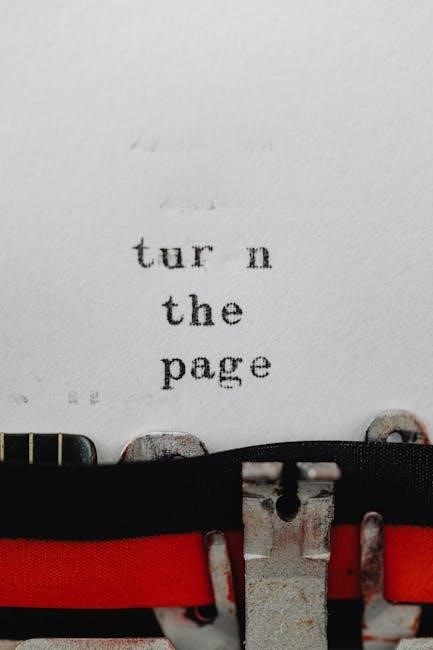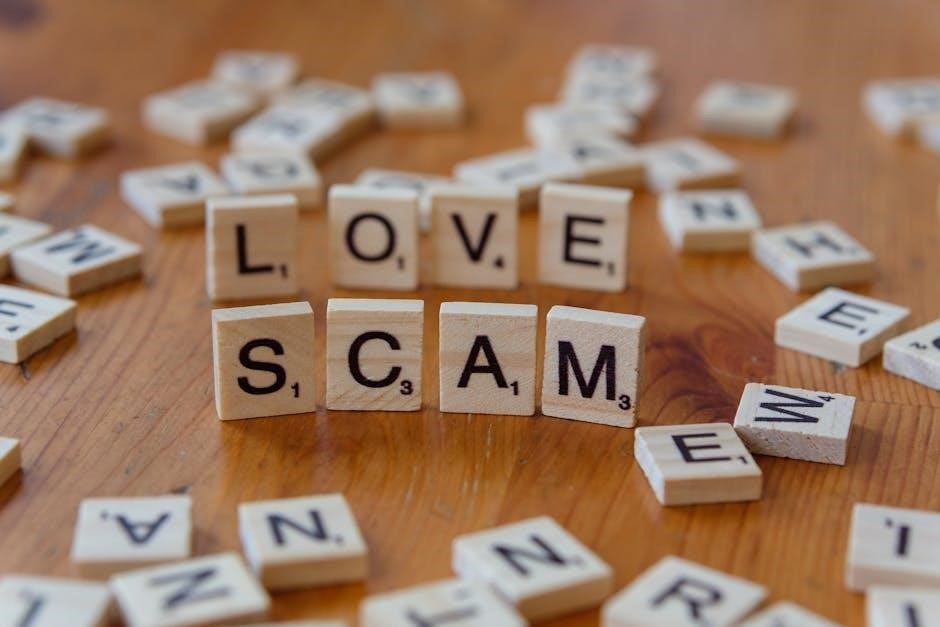The Official CIA Manual of Trickery and Deception reveals the fascinating intersection of magic and espionage. Edited by H. Keith Melton and Robert Wallace, this guide details how magicians like John Mulholland helped the CIA master deception techniques during the Cold War, blending illusion with intelligence operations to create sophisticated spy tactics. This historic document provides a unique glimpse into the methods used to outwit adversaries, showcasing the creativity and ingenuity of espionage strategies.
1.1 Background and Significance

The Official CIA Manual of Trickery and Deception traces its origins to the Cold War era, when the CIA sought innovative methods to outwit adversaries. This declassified document highlights the agency’s collaboration with magicians, blending illusion with espionage to create advanced deception techniques. Its significance lies in revealing how intelligence operations incorporated creative strategies, offering a unique insight into the intersection of magic and spy craft during a pivotal historical period.
1.2 Authors and Publication Details
Edited by renowned intelligence historians H. Keith Melton and Robert Wallace, The Official CIA Manual of Trickery and Deception was published in 2009 by Hardie Grant. This meticulously curated edition unveils the CIA’s secret collaboration with magician John Mulholland, offering a rare glimpse into the agency’s adoption of magical techniques for espionage. The manual’s release has sparked significant interest, bridging the gap between espionage history and magical deception.

Historical Context
The CIA Manual of Trickery and Deception emerged during the Cold War, a period of heightened espionage where the agency collaborated with magicians to develop innovative deception techniques, significantly influencing modern espionage strategies.
2.1 CIA and Magic Collaboration
The CIA’s collaboration with magicians, notably John Mulholland, revolutionized espionage tactics. Techniques like sleight of hand and misdirection were adapted for covert operations, enhancing the agency’s ability to deceive adversaries. This unique partnership during the Cold War era laid the foundation for modern espionage methods, blending illusion with intelligence to achieve strategic advantages. The manual serves as a testament to this innovative fusion of magic and deception.
2.2 Cold War Era Espionage
During the Cold War, the CIA employed innovative deception techniques to counter Soviet espionage. The manual highlights how magicians’ tricks were adapted for espionage, enabling agents to execute missions with precision. Techniques like hidden compartments and disguise methods became essential tools. This era marked a peak in espionage creativity, as the CIA leveraged illusion and deception to gain a strategic advantage in global intelligence operations, shaping modern spy craft.

Techniques of Deception
The manual details deception techniques like disguise, surveillance, and psychological manipulation, showcasing how magicians’ skills were adapted for espionage, blending illusion with intelligence operations effectively.
3.1 Disguise and Concealment Methods
The manual outlines sophisticated disguise techniques, including the use of wigs, prosthetics, and false identities, to alter appearances and deceive targets. It also explores concealment methods, such as hidden compartments in everyday objects, to transport sensitive materials undetected. These strategies, adapted from stage magic, were refined by experts like John Mulholland to ensure operatives could blend seamlessly into their environments, making them nearly invisible to surveillance.
3.2 Surveillance and Evasion Tactics
The manual details advanced surveillance and evasion techniques, emphasizing the importance of blending into environments and avoiding detection. It explains how operatives used disguises, fake identities, and psychological manipulation to gather intelligence without suspicion. These methods, inspired by magicians, included creating false impressions and exploiting human perception to remain undetected. The tactics outlined in the manual highlight the cunning and precision required for successful espionage operations during the Cold War era.
3.3 Psychological Manipulation Strategies
The manual explores psychological manipulation as a cornerstone of deception, detailing techniques to influence perceptions and actions. It describes how operatives used suggestion, illusion, and misdirection to control situations. These strategies, adapted from magic, aimed to create false realities, making targets unaware of their manipulation. The document highlights the ethical dilemmas of such tactics, emphasizing their effectiveness in Cold War espionage to extract information or alter decisions without direct coercion.

The Role of Magicians
Magicians played a pivotal role in shaping CIA deception techniques, with John Mulholland adapting stage tricks for espionage. Their expertise in illusion and misdirection helped operatives master covert operations, blending magic with spy craft to achieve strategic goals during the Cold War era.
4.1 John Mulholland’s Contribution
John Mulholland, a renowned stage magician, contributed significantly to the CIA’s deception manual. His expertise in illusion and misdirection was adapted into practical espionage techniques, teaching agents how to conceal identities, manipulate perceptions, and execute covert operations seamlessly. Mulholland’s work laid the foundation for the integration of magic into intelligence operations, enhancing the CIA’s ability to deceive and outmaneuver adversaries during the Cold War era.
4.2 Adapting Magic for Espionage

The manual details how magicians’ techniques were repurposed for espionage, transforming stage tricks into sophisticated tools for deception. Methods like sleight of hand, disguise, and misdirection were refined for covert operations, enabling agents to bypass surveillance and conceal sensitive information. These adaptations highlighted the synergy between magic and espionage, proving invaluable during the Cold War era for executing high-stakes missions with precision and stealth.

Real-World Applications
The manual highlights how deception techniques were employed in real CIA operations, showcasing their effectiveness in covert missions and intelligence gathering during the Cold War era.
5.1 Successful Operations Using Deception
The manual details how the CIA employed deception in real-world operations, such as covert missions and intelligence gathering. Techniques like disguise and psychological manipulation were pivotal in Cold War espionage. For instance, Operation Tinker Bell utilized illusion and misdirection to deceive adversaries. These strategies, refined by magicians like John Mulholland, showcased the practical application of deception in achieving strategic objectives, highlighting the manual’s relevance to modern espionage tactics and methodologies.
5.2 Case Studies and Examples
The manual includes compelling case studies, such as Operation Tinker Bell, where the CIA used deception to create fake military installations, misleading enemy forces. Another example involves agents employing disguise and forgery to infiltrate high-security facilities. These real-world applications demonstrate how the techniques outlined in the manual were effectively executed, showcasing the practicality and ingenuity of CIA operations during the Cold War era.

Ethical Considerations
The manual raises ethical questions about deception in espionage, balancing national security with moral concerns. It highlights the fine line between strategic trickery and potential misuse.
6.1 Moral Implications of Deception
The CIA manual raises significant moral questions about the use of deception in espionage. The manipulation of perception and reality challenges ethical boundaries, questioning the justification of such tactics. While deception can serve national security interests, it also risks undermining trust and violating personal rights. The ethical debate revolves around balancing strategic necessity with the potential for misuse and long-term consequences on global relations and individual freedoms.
6.2 Legal and Ethical Debates
The CIA manual highlights legal and ethical dilemmas surrounding deception tactics. Its methods often operate in gray areas, challenging international laws and human rights standards. The use of trickery raises questions about accountability and the limits of governmental power. Legal debates focus on balancing national security interests with individual rights, while ethical discussions emphasize the potential for abuse and the erosion of trust in democratic institutions. The manual sparks ongoing debates about the boundaries of espionage.
Legacy and Influence
The manual has left a lasting impact on modern espionage, influencing covert operations and inspiring popular culture. Its techniques remain relevant today, shaping intelligence practices worldwide.
7.1 Impact on Modern Espionage
The manual’s techniques have evolved into advanced deception strategies used in contemporary espionage. Magicians’ contributions inspired sophisticated methods like social engineering and psychological manipulation, now integral to modern spy craft. The document serves as a historical blueprint, offering insights into countering espionage tactics. Its influence is evident in intelligence training programs worldwide, ensuring its legacy endures in shaping covert operations and security measures.
7.2 Cultural Impact and Popularity
The manual has captivated audiences with its unique blend of espionage and magic, inspiring numerous media adaptations and public interest. Its release sparked debates on the ethics of deception, making it a popular topic in both espionage and magic communities. The book’s intriguing stories of real-world trickery have endeared it to readers globally, solidifying its place in cultural history as a fascinating intersection of illusion and intelligence.

Key Figures
John Mulholland, a renowned magician, and H. Keith Melton and Robert Wallace, experts in espionage history, are central to the manual’s creation and insights into CIA deception tactics.
8.1 John Mulholland: The Magician Spy
John Mulholland, a celebrated stage magician, played a pivotal role in the CIA’s espionage efforts by adapting his magical skills for covert operations. His collaboration with the agency during the Cold War led to the development of innovative deception techniques, blending illusion with intelligence work. Mulholland’s expertise in disguise and concealment was instrumental in creating practical methods for spies, as detailed in the manual. His legacy underscores the unique intersection of magic and espionage.
8.2 H. Keith Melton and Robert Wallace
H. Keith Melton and Robert Wallace are renowned experts in espionage history and technology. As editors of The Official CIA Manual of Trickery and Deception, they uncovered and documented the agency’s collaboration with magicians during the Cold War. Their work reveals how magical techniques were adapted for intelligence operations, offering rare insights into the CIA’s creative methods of deception and espionage. Their contributions have significantly enriched the understanding of spy craft history.
The manual’s blend of magic and espionage highlights the CIA’s creative strategies, offering timeless lessons in deception’s art and its ethical complexities in intelligence.
9.1 Reflecting on the Manual’s Significance
The CIA Manual of Trickery and Deception stands as a remarkable blend of magic and espionage, offering insights into the Cold War’s covert operations. Its unique methods, crafted by John Mulholland and detailed by H. Keith Melton and Robert Wallace, reveal how illusion and psychology were weaponized. This document not only highlights the ingenuity of espionage tactics but also sparks ethical debates about deception’s role in intelligence, leaving a lasting legacy in both spy craft and popular culture.
9.2 Relevance in Contemporary Times
The CIA Manual of Trickery and Deception remains relevant today, as its techniques of disguise, surveillance, and psychological manipulation continue to influence modern espionage and cybersecurity. The blending of magic and espionage highlights the timeless importance of creativity in deception. Its lessons on social engineering and mental manipulation are still studied, offering insights into the evolving nature of intelligence operations in the digital age.